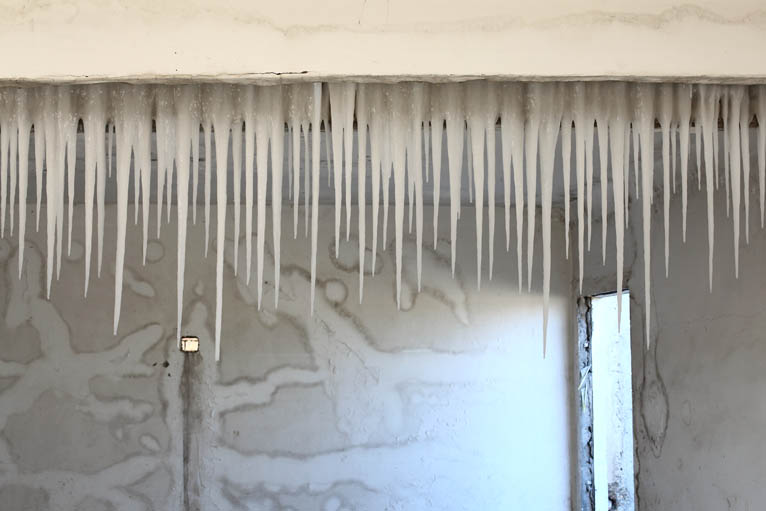POETIC GRACES
| April 1, 2010 | Post In LEAP 2

A description of this show can only begin with its unconventional site—one had to make quite a few phone calls before finding, at first without much confidence, the remote and desolate “Lao Xia Field,” and upon it, a collection of abandoned concrete-slab worker dormitories in which the works were mounted. Conditions were poor and unsupervised. We can discuss how the curators’ choice of their so-called “exhibition space” expresses their geopolitical leanings, or how they use the geographical “advantages” of the site to grant their show full potential and freedom, while also placing the interests of the site above all else. Regardless of whether one could find the artwork housed in these structures, one could at least experience the incidental beauty of the winter sunlight filtering into the spaces at random angles. Finding some of the artworks here required both luck and skill; the pieces, strewn and hidden, had blended together with the spaces that contained them. Ultimately, the overwhelming site-specificity of this exhibition made for a diverse and crafty experiment.
Guo Haiqiang’s icicle work filled a gap between two of the rooms. Uneven, coarse and fine, some shining with captured sunlight, these icicles came off as natural, like modest willowy plants growing in the surrounding environment. Luo Caili made use of the beautiful water stains in one of the rooms, adding a few brushstrokes to turn them into a menagerie of small, whimsical animals, which she then photographed, printed and arranged in the “pasture” of the floor. Hu Liu copied Rilke quotes onto the wall in blue chalk, like meditative spells; the rich details bore careful reading, and in the light and shadow of the room they gave off a painterly feel. These scribbled passages engage in dialogue with the original graffiti in some of the other rooms, looking entirely natural. Shi Wanwan wrote two multicolored strings of football lottery numbers inside an elaborate golden frame and entitled the piece I Have a Dream. Cong Lingqi left behind empty old picture frames to romantically suggest that people used to live here, also making good use of the site’s inherent social tensions.
The above works blend gracefully with the site to form a consistent whole, the coherent intermingling of the manmade and the natural making for a very powerful visual experience. But in addition to these harmonious works there were also some powerfully destructive pieces. Gao Feng, for example, knocked holes through a row of houses along the same line to occupy the spaces in a more abstract fashion, connecting them in a forced yet interesting way to form a “visible” whole. He Chi dug out the floor from under a room and piled the excavated earthen bricks and gravel so as to hold the room up by its ceiling and keep the whole thing from sinking. By refusing to conform to their surroundings, these pieces made for tense interactions with the spaces that housed them, allowing the show to escape slavish adherence to certain themes and rendering it more objective and complete.
Because the show’s site was so completely unrestricted, anyone could do whatever they wanted, giving rise to temptations of hedonism. But what is most important is that this is a show by a group of young artists. What they need is not substance but freedom, the freedom to look for their own rules in this orderless, otherworldly space. These rules relate to the most practical elements of site, time, natural conditions and so forth, revealing the artists’ fundamental understanding of art as necessarily active and diverting. At the same time one might also venture that the rules that still must be followed are the same old ones that hold art in a logical death-grip; there are many familiar shadows in the mood of the show. But these might well be the very source of its energy, the place where a more meaningful logic resides. Yu Ke

